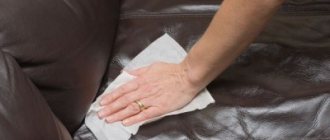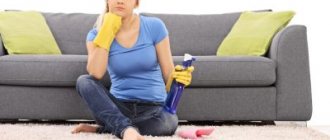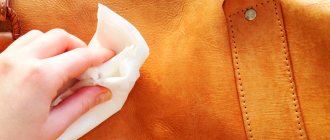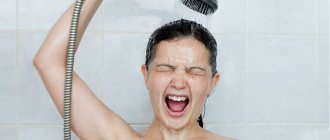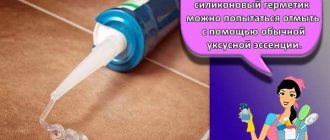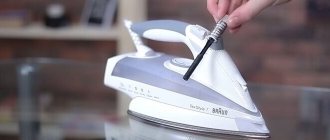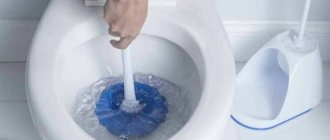A luxurious leather sofa fits effectively into the interior of the room, unobtrusively emphasizing the refined taste and status of the owner. The natural material is quite difficult to care for and requires careful handling.
To maintain an impeccable appearance, it is necessary to responsibly approach the process of cleaning furniture from stains and dirt. Using the wrong products can cause irreparable harm and permanently damage the upholstery.
Features of cleaning leather furniture
Leather is one of the most fastidious materials that requires regular and delicate care. Timely cleaning of furniture from dust makes it easier to combat dirt and allows you to preserve its original appearance for a long time.
Advice! There is no need to wash the product every day; frequent wiping accelerates the wear of the coating, and scuffs and cracks appear on the upholstery. It is best to use an integrated approach and combine wet and dry cleaning methods.
When cleaning, it is important to adhere to the following care rules:
- First, use a vacuum cleaner to remove debris from the surface of the furniture. To do this, use a special soft nozzle. Particular attention is paid to the seams. Dust can be wiped off with a dry cloth.
- For wet cleaning, use soft cloths that glide over the surface of the skin without leaving scratches.
- Do not treat upholstery with metal scrapers, hard brushes or sponges. Aggressive methods of exposure - friction or scraping lead to thinning of the skin layer and the appearance of cracks.
- For each cleaning stage, it is necessary to select special compositions intended for the care of leather furniture. It is better to avoid aggressive chemicals with abrasive substances, and gels with solid inclusions can scratch the surface of the furniture.
- The selected product must be tested on an inconspicuous area of the coating.
- After wet cleaning, remove excess liquid with a dry cloth. Do not use hot air drying (hair dryer, heaters).
- To protect against scratches and abrasions, use special products based on wax or glycerin.
- Fresh stains must be removed immediately without allowing them to soak in. It is not advisable to rub the contaminated area of the upholstery; just blot it with a dry cloth.
The main attention is paid to heavily polluted places where people sit most often. These areas are treated with a sufficient amount of cleaning agent, the excess of which is removed with a soft cloth.
Advice! Once every 5-6 months after cleaning the product, a procedure is carried out to restore the skin layer using special impregnations.
How to wash white or light-colored furniture?
Dust accumulates on the surface of a leather sofa, which, due to its porous structure, penetrates deep into the material. As a result, stubborn stains form, giving the furniture a sloppy appearance. Such stains are especially noticeable against the background of light-colored upholstery.
To clean white leather furniture, you can use not only special compounds, but also improvised means:
- Soap solution. Effectively removes stains.
- Toothpaste. Use a product without color inclusions.
- Ammonia.
- Lemon juice or weak vinegar solution.
Note! After cleaning is completed, the white leather covering must be lubricated with a special impregnation or rich cream.
Cleaning steps
The choice of method and cleaning products depends on the type of furniture material and its color. Conventionally, the whole process can be divided into 3 stages, each of which has its own characteristics.
Preparation
Before you start cleaning leather furniture, you need to do some preparation. It is not necessary to purchase expensive professional products; at home, a regular vacuum cleaner can remove the top layer of dirt:
- A narrow crevice nozzle is attached to a household appliance and the entire surface of the furniture is treated. Particular attention is paid to joints and seams.
- Then change the attachment to a small brush with soft bristles and treat the entire surface of the sofa.
- Determine the cleaning method and prepare suitable products. For normal routine cleaning, use suitable formulations recommended by the manufacturer. To remove different types of stains, special compounds may be required.
Removing contaminants
Manufacturers indicate the specifics of upholstery care in the furniture instructions. If wet cleaning is not prohibited, then add a small amount of liquid soap or shampoo to a container of water and shake until foam forms. The resulting composition is applied to a small, inconspicuous area of the leather product to check the reaction of the material.
If the upholstery does not react to the solution, proceed to cleaning the entire furniture covering:
- A soft cloth is soaked in a soapy solution and the surface is wiped.
- Excess composition is removed with a clean cloth.
- Traces of soap are removed using a dry cloth.
Note! If there are stains on the upholstery, use special cleaning compounds. Products are selected depending on the type and degree of contamination.
Post-processing
After cleaning the furniture and removing stains from the surface, it is necessary to carry out post-processing. This procedure involves polishing the coating material to add shine. As a result, the furniture acquires not only a beautiful appearance, but protection from drying out.
Stages of work:
- Use a dry soft cloth to wipe the entire surface of the furniture, paying special attention to the seats.
- The required amount of the selected polishing composition is applied to the napkin in accordance with the instructions on the package. Rub the product into the leather with gentle movements. To ensure that there are no streaks left on the furniture, it is necessary to remove traces of the composition.
Note! When polishing, do not use excessive force - abrasions may occur.
Have you ever cleaned a leather sofa?
Not really
Consider your skin type
It determines how the upholstery should be treated and what cleaning and protective products to choose.
Genuine leather - treated and untreated (less common) - is durable and resistant to external influences. Depending on the type of processing, it can be aniline, semi-aniline or varnished.
Artificial and eco-leather are not as durable as natural leather, but in general they are practical materials with similar properties.
If you still have instructions after purchasing furniture, check it for information about leather type. If not, look for labels on the furniture itself or a description on the manufacturer's website.
Cleaning products depending on the type of contamination
Fresh stains should be removed immediately using a cloth soaked in water or a damp cloth. Contaminants that have been absorbed into the surface are more difficult to remove.
There is no universal remedy; each stain requires a different approach. Depending on the type of contamination, various professional cleaners are used. In the absence of special compounds, you can try to make do with available folk remedies.
Note! Before use, any product should be first tested on an inconspicuous area of the upholstery.
Oily stains
You can remove stains from fatty foods that appear on leather furniture during use using the following means:
- A solution of dishwashing detergent with the addition of soda and vinegar. 0.5 tbsp is diluted in 1 liter of water. l. any detergent, 1 tsp. soda and a small amount of vinegar. A thick soap foam forms, which is applied to a soft cloth and gently cleans the contaminated area. The remaining product is removed with a damp cloth and wiped dry.
- Add 0.5 tbsp to a glass of warm water. l. ammonia, 1 tbsp. l. grated solid or liquid soap. The solution is applied to the stain and wiped dry.
- A mixture of toothpaste and salt. The product not only effectively removes stains, but also lightens scuffs, especially on light-colored furniture. Add a small amount of fine salt to white toothpaste without colored inclusions and carefully treat the greasy stain.
Note! Fresh stains are removed using starch or talc. Sprinkle the product onto the contaminated area and leave until the grease is completely absorbed. The remaining starch is collected with a damp cloth or rag and wiped dry.
Traces of ink, pen and felt-tip pen
These are the most common stains that inevitably appear on furniture in a home where there are children.
You can deal with such stubborn stains using the following available tools:
- Dissolve 1 tbsp in 1 glass of water. l. citric acid or lemon juice. Gently wash the stain with the resulting solution.
- A cotton pad must be moistened with ammonia or cologne and gently wipe the stain.
Note! Traces of accidentally spilled ink should be removed as quickly as possible.
To do this, use a mixture of 1 glass of water and a teaspoon of ammonia, which is used to soak the salt. The mixture is applied to the problem area and left until completely dry. Remains of the product are removed with a damp cloth and wiped dry.
Traces of blood and other biological fluids
Fresh stains can be easily removed with plain cool water or a mild soap solution. Dilute 1 tbsp in a glass of water. l. soap shavings and treat the problem area.
For old stains, it is necessary to use more effective methods:
- Dissolve 1 effervescent aspirin tablet in 200 ml of water. Gently wipe the contaminated area with the resulting mixture.
- A small amount of hydrogen peroxide is applied to the stain and gently treated with a soft cloth.
- Add 1 tsp per glass of water. salt and stir until the small grains are completely dissolved. Using a cotton pad, treat the stain with the solution.
Note! To remove stains from blood and other body fluids, use only cool water-based products. An increase in temperature accelerates the process of absorption of substances in the blood into the surface of the sofa. Such stains are much more difficult to remove.
Find out 24 reliable and effective ways to clean blood from your couch, plus how to remove the smell of vomit.
Animal urine smell
If there is a cat or dog in the house that likes to mark territory, the problem of getting rid of the persistent odor of urine inevitably arises.
For this, the following compositions are used:
- A mixture of baking soda, salt and eucalyptus essential oil. Mix soda and salt in equal proportions, add a few drops of ether and use a soft sponge to treat the surface of the furniture.
- Dilute a small amount of powder in a glass of warm water and add a little vinegar. Clean the contaminated area with the solution. Residues are removed with a damp cloth and the surface is polished with a glycerin-based product.
Note! You can use special compounds that remove the smell of urine and discourage animals from marking furniture.
This article will tell you how to remove the smell of cat urine from a sofa, this article for a child’s room, and this article for dog urine.
Gum
Chewing gum does not penetrate the skin structure, so getting rid of it is very easy:
- Using a spoon or other non-sharp object, carefully pry up the edges of the chewing gum and scrape it off the surface of the furniture.
- If you can’t pry the edges, the gum is first frozen with an ice cube. Once hardened, the gum is easily removed.
Wine or juice
Fresh drink stains should be immediately blotted with a paper towel and sprinkled with salt. This will stop the liquid from spreading across the surface of the furniture.
Dried marks are removed with warm water and detergent, which should not contain chlorine. Old stains are treated with a solution of medical alcohol.
Note! After cleaning, the sofa must be polished with glycerin.
Coffee
Traces of coffee and tea can be easily removed with a soap or vinegar solution. A small amount of vinegar is diluted in water and the stained area is gently wiped.
Note! The stain begins to be treated from the edges to the center so as not to increase the area of contamination.
Marks from a ballpoint pen
It is quite simple to return the original appearance of randomly drawn leather furniture:
- To remove the top layer of the stain, you need to stick a strip of tape on the mark from the pen and carefully tear it off.
- The contaminated area is treated with soapy water and wiped dry.
Note! You can use a rubber band to gently rub the upholstery.
Find out how to wipe the handle off a sofa made of fabric, leatherette, or velor.
How to remove stains using improvised means?
To clean the contaminated surface of leather furniture, it is not necessary to purchase expensive professional compounds. Most stains can be dealt with using available products that are found in every home.
How to clean with soapy water?
This method removes fresh contaminants that do not require the use of more aggressive substances. To prepare the solution you will need 1 liter of warm, but not hot water and 0.5 tbsp. liquid soap. You can take regular laundry soap, which must first be grated.
The composition is applied to the contaminated area and left for 15-20 minutes. Wash off any remaining product with a damp cloth.
Note! It is recommended to use a soap solution regularly to keep leather furniture clean and fresh.
Vinegar and water
Use for dried stains. Dilute 2/3 cup of 9% vinegar in a glass of water at room temperature. Add 2 tbsp to the solution. baking soda and a few drops of liquid soap.
Apply the composition to the stains with a soft bristle brush and leave until completely dry. Then wipe the surface of the furniture with a damp cloth or rag soaked in water.
Note! When applying the vinegar solution, the stains become brighter, but after the liquid dries, they completely disappear.
Hydrogen peroxide
Dilute 150 ml of peroxide in a glass of warm water and add 1-2 tbsp. soda The resulting mixture is poured into a bottle with a spray bottle and gently sprayed onto the contaminated area. After a few minutes, the edges of the spots will begin to blur.
Note! After cleaning is completed, the furniture must be dried. Excess moisture can cause mold to appear. A hairdryer with a cool air flow is best.
Ammonia
It is advisable to use this method for light leather furniture. Dissolve 0.5 tbsp in a glass of water. ammonia, add 1 tsp. liquid soap. Using a fluffy cloth, apply the product to the dirt.
For old stains, you will need a more concentrated solution. Dilute 1 tbsp in 25 ml of water. alcohol and a cotton pad are applied directly to the stain. After treatment, the area is wiped with a mild soap solution and dried.
Talcum powder or baby powder
This method is only used to remove fresh greasy food stains. Talc-based powder is mixed in equal proportions with fine salt. The resulting mixture is generously sprinkled onto the stains.
After 20-30 minutes, the furniture must be vacuumed. After finishing the treatment, wipe the surface with a damp cloth.
Aspirin
This product is only suitable for removing stains from blood and other body fluids. One effervescent aspirin tablet is diluted in 10 ml of warm water (you can take regular aspirin, but it must first be crushed).
The composition is applied to the stain, avoiding contact with the surrounding area, and gently wiped with a cotton pad. After treatment, remove any remaining product with a cloth soaked in water.
Note! Aspirin can be used to remove streaks that occur when removing stains.
Petrol
A potent product that must be used with caution so as not to damage the upholstery. Use only as a last resort and to remove stubborn stains from ink, paint, nail polish and marker.
Only fuel that has been purified from impurities is suitable for processing. Soak a cotton swab in gasoline and gently wipe the stain without applying force.
Immediately after the stain disappears, the remaining gasoline is immediately removed with a soft cloth, onto which a small amount of liquid soap or detergent is applied.
The simplest and most effective means
The skin needs additional care, so for monthly preventative cleaning you can use the following products:
Banana peel
The inner layer goes well through all hard-to-reach places and folds. In addition to removing dirt and dust, the peel adds shine and smoothes out scuffs.
Alcohol
Suitable for difficult stains, but may cause fading of the skin in areas of frequent treatment. Suitable for light-colored furniture.
Dentifrice
Diluted in equal proportions with water, applied with a soft sponge. Quickly removes dirt, dust, and unpleasant odors.
Some craftsmen recommend cleaning the sofa using an onion and milk. There is no particular result from these products, but the smell that remains will remain in the living room for a long time.
Specialized compounds
Manufacturers of household chemicals offer a wide range of various professional products for the care of leather furniture. The product has a gentle effect on the upholstery, removing stains and other contaminants.
Wet wipes House lux
The product is used to remove small stains and fresh stains. Wipes help maintain the elasticity and softness of leather furniture and add shine.
The composition contains organic ingredients that not only remove stains, but also moisturize the skin. Additional advantages include a large volume of packaging and an affordable price for the products.
Note! The wipes do not leave marks or streaks, so after using them there is no need to wipe the surface of the furniture with a damp cloth.
Eco mist
The furniture cleaner does not contain chlorine or other aggressive substances. The environmentally friendly water-based formula allows the composition to be used to treat a sofa in an apartment with small children and allergy sufferers.
The plant components contained in the product effectively cope with most fresh stains. For old stains, it is better to choose a different drug.
Bagi super leather
A powerful impregnation spray suitable for almost all types of stains. The product contains beeswax, which restores the original color of furniture and adds natural shine, protecting against scuffs. The only drawback is the high price of the spray.
Note! The composition contains chemicals, so processing is carried out with a mask and gloves. The room should be well ventilated.
Cleaners Grass leather cleaner
This line of products is designed not only for removing stains from leather upholstery, but also for subsequent care of furniture. The manufacturer produces the composition in the form of a gel or conditioner in a bottle with a spray.
The product penetrates deeply into the structure of the upholstery, is instantly absorbed, moisturizes the skin and protects against abrasions.
Types of cleaning products
Leather for upholstery can be:
- perforated,
- structured,
- polished.
It is also divided into artificial and natural. There are household chemicals for all types on the market. The compositions are designed in such a way as not to overdry the material and maintain its elasticity. They envelop the fibers and create a protective coating. Balms fight grease stains and printing ink, juice and coffee, etc.
Furniture companies provide recommendations for caring for their products. They recommend treating your skin with conditioners several times a year to maintain skin elasticity. Insufficient moisture leads to the formation of cracks.
The following types of cleansers are distinguished:
- Cleaners gently and carefully care for products;
- polishes form a film when applied and give the material a beautiful shine;
- Conditioner will make the skin soft;
- to make the surface elastic, it is enough to apply wax to it;
- the balm moisturizes leather coverings;
- minor dirt can be removed with napkins;
- You can use cream soap regularly;
- Prevents stains from impregnation, which forms a protective layer;
- effective and safe stain remover compositions.
Characteristics
The studied characteristics help prevent mistakes when choosing a chemistry. The description from the manufacturer contains all the important information: what it is used for, whether it needs to be washed off, what properties it has, etc.
| Characteristic | Description |
| Type | Wax, spray, lotion, conditioner, etc. |
| Purpose | For leather products, for natural leather, for artificial leather, a universal product. |
| Requires rinsing | Not really |
| Volume | The volume must be indicated on the packaging and in the description. |
| Dimensions, weight | Sometimes the dimensions of the container and weight are indicated. |
| Brand and country of origin | For example, Grass, Russia or Bagi, Israel. |
| Peculiarities | The liquid may have an antistatic effect and contain wax. They also indicate whether it is hypoallergenic or not, whether it is tested on animals and any other information. |
| Safety | The instructions tell the user whether the composition is safe for children and animals. The percentage of surfactants, nonionic surfactants, and other chemicals is usually indicated here. |
| Compound | Describes the elements used in manufacturing. For example, dechlorinated water, corn extract, etc. |
Cleaning using technology
To remove fresh dirt from a leather sofa, you can use household appliances. The main thing is to choose a suitable nozzle that will not damage the structure of the material.
Before cleaning, you must use a vacuum cleaner to remove debris and animal hair from the surface of the furniture. Then apply the required amount of cleaning agent to the upholstery and treat the contaminated area using a soft bristle brush attachment.
For old and stubborn stains, use a steam generator, the tank of which is filled with water and a small amount of conditioner. This method allows you to not only clean, but also disinfect furniture, eliminating germs and unpleasant odors.
Note! Steam treatment is carried out at a distance of at least 5 cm from the upholstery, so as not to cause irreparable damage.
Cleaning from dust
To care for the leather of the sofa, a vacuum cleaner is used, which rids it of its main enemy - dust. If you don't clean the upholstery once every two weeks, dust will clog the pores of the leather, making it even more difficult to get rid of dirt. The abundance of dirt significantly reduces the service life of leather products. When cleaning, use a soft brush to remove dust from folds and crevices. Suitable for both home and car vacuum cleaners. If you don’t have any equipment, you can use a special broom or a damp cloth. To add shine, you can soak a rag in a weak lemon solution and wipe the leather sofa with it.
How to remove scuffs?
Even the most careful use and regular care of furniture does not protect against scuffs and scratches. Over time, the surface becomes dull and takes on a sloppy appearance. To restore damaged upholstery, you can use both special compounds and improvised means.
Olive oil
Suitable for minor damage. To treat, a cotton pad must be moistened with a small amount of oil and applied to the damaged area. Using gentle circular movements, gently rub the product into the abrasions and surrounding area.
The oil is left for 1-1.5 hours until completely dry, then the residue is removed with a damp cloth. If necessary, the procedure is repeated several times.
"Liquid skin"
Using a professional paste for restoring leather products, you can quickly return your furniture to its original appearance. Suitable for black, brown and white upholstery. To restore the upholstery of leather furniture in other shades, you will have to use other means.
Apply a small amount of the product to the abrasions with a porous soft sponge and leave until completely dry.
Shoe polish
The right shade of shoe polish allows you to saturate the leather and disguise minor scratches. Using a cotton swab, gently apply the product in a circular motion to the damaged area.
Note! After the treatment is completed and the cream has completely dried, it is necessary to wipe the upholstery with a suede cloth.
Wax
You can use not only special furniture wax, but also regular beeswax. The product is heated to the melting point and applied to the abrasions. After treatment, wipe the damaged area with a flannel cloth.
Attention! Wax not only restores the original structure of the leather, but also adds shine to the furniture.
Nutrition and hydration
The skin needs hydration and protection, which is important to remember every time you clean a piece of furniture. After cleaning products, wipe the surface dry, treating it with a greasy base.
Showed themselves best:
Olive oil
Natural product with maximum fat content. Adds shine, smoothes out microcracks, and is quickly absorbed. Treatment with olive oil should be done once a month. To do this, apply 2-3 tablespoons of oil to a soft rag and pass over the entire surface of the sofa. Leave to soak for 10-15 minutes, then polish with a dry soft cloth until shiny.
Glycerol
It has a denser base and is suitable for worn furniture. Quickly fills cracks and prevents the appearance of new ones. A cotton pad is moistened with glycerin and quickly passed over the surface. Polish with any dry microfiber cloth.
Wax
The special product is heated in a water bath and applied in the same way. Excess is removed with a sponge. A thin film is formed on the surface, which protects the furniture from moisture.
Among the special products, liquid skin should be noted. It contains elements of oils that make the surface of the sofa more even, smooth and attractive. Use according to instructions.
Care after cleaning
In order for leather furniture to serve for a long time and maintain its impeccable appearance, it is necessary not only to remove dirt in a timely manner, but also to follow the rules of care.
- You can't eat or drink on the couch. Even the most careful people can accidentally spill a drink or drop pieces of food. As a last resort, the furniture is temporarily covered with a soft cover or cape.
- It is necessary to maintain a humidity of at least 40% in the room.
- It is prohibited to place furniture near radiators and other heat sources. This may cause cracks to appear on the surface.
- It is necessary to protect furniture from direct sunlight. Otherwise, the upholstery will quickly fade.
- To care for leather, do not use strong chemicals containing abrasive particles and aggressive substances.
Genuine leather is one of the most luxurious and capricious materials that requires delicate treatment. Compliance with the rules of care, regular cleaning and timely removal of stains allows you to preserve the original appearance of the furniture for a long time.
Do you have a leather sofa in your home?
Not really
General tips and tricks
To make pollution control as effective as possible, remember these simple rules:
- If a stain appears, you need to act immediately. Leather perfectly absorbs various liquids, so a new stain that is not removed will quickly become an old one that is difficult to remove, which in turn will not only spoil the appearance of the product, but will also affect its service life.
- Do not use aggressive chemicals in the form of paint solvents and gasoline - you can not only get a hole at the treatment site, but also add an additional greasy stain if there are cracks and damage.
- Do not place sofas in close proximity to a heat source. This will lead to overdrying of the surface and will require more frequent cleaning.
How would you clean the sofa?
IndependentlyCleaning
- Do not use the sofa as a place for eating or drinking drinks. Even the most careful people can become hostage to the situation and ruin an expensive sofa.
- If you are not confident in the possibility of cleaning yourself, it is better to seek help from special cleaning agencies that work on-site. They have special tools in their arsenal that will allow them to cope with the most complex and deep stains.
In conclusion, it is important to note that leather furniture requires periodic cleaning using mild products. The faster the stain is removed, the higher the likelihood that there will be no trace after it. To eliminate scuffs, furniture must be treated with products based on vegetable oils after each cleaning. This will protect the skin from drying out and the formation of new spots.

